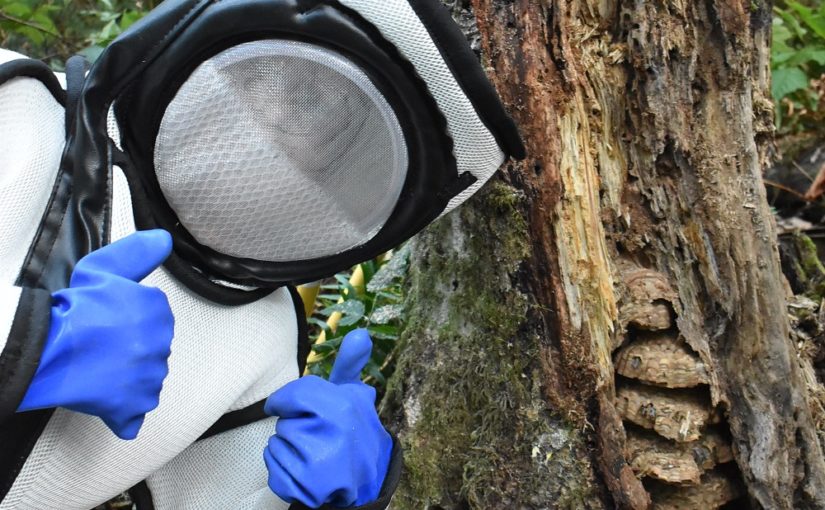Aug 30, 2021Washington eradicates first Asian giant hornet nest of 2021
The Washington State Department of Agriculture eradicated the first Asian giant hornet nest of the year on Wednesday, Aug. 25.
The nest was located in the base of a dead alder tree in rural Whatcom County, east of Blaine. It was located about two miles from the nest that Washington State Department of Agriculture (WSDA) eradicated last October and about one-quarter mile from where a resident reported a live sighting of an Asian giant hornet on Aug. 11. The site was also about one-quarter mile from the Canadian border.
WSDA staff began Wednesday’s eradication by vacuuming 113 worker hornets from the nest. Once the worker hornets were removed, the team began removing bark and decayed wood near the base of an alder tree at the entrance to the nest. Removing the wood revealed that the hornets had excavated the interior of the tree to make room for the nest, which consisted of nine layers of comb.
The portion of the tree with the nest was cut and transported to Washington State University Extension in Bellingham for further analysis. In addition to the worker hornets vacuumed from the tree, WSDA staff caught 67 additional hornets in the area with nets during the eradication. The nest itself had nearly 1,500 hornets in various stagesof development.
“While we are glad tohave found and eradicated this nest so early in the season, this detection proves how important public reporting continues to be,” Sven Spichiger, WSDA managing entomologist said. “We expect there are more nests out there and, like this one, we hope tofind them before they can produce new queens. Your report may be the one that leads us to a nest.”


Anne LeBrun, National Policy Manager for Pollinator Pest Programs with the U.S. Department of Agriculture’s Animal and Plant Health Inspection Service noted that successful cooperation between State and Federal agencies and members of the public is paying off in Washington. “We are pleased to play a role in this collaborative success by sharing technical expertise, providing financial support, and collaborating on survey and research efforts,” said LeBrun. “Public involvement remains an essential part of eradicating this hornet.”
WSDA will continue to trap for Asian giant hornets through the end of November. People who would like to set their own traps can find instructions on WSDA’s website. Those who suspect they have seen an Asian giant hornet should take a photograph if possible and visit agr.wa.gov/hornets to report the sighting.
Asian giant hornets are the world’s largest hornet and are not native to North America. They prey on honeybees and other insects. They can conduct mass attacks on honeybee hives, destroying the hive in a matter of hours. The hornets were first detected in the United States in 2019 when a hornet was reported in Whatcom County. Since that time, WSDA has been working with local, state, and federal partners to find and eradicate the hornets and prevent them from establishing in the United States.















